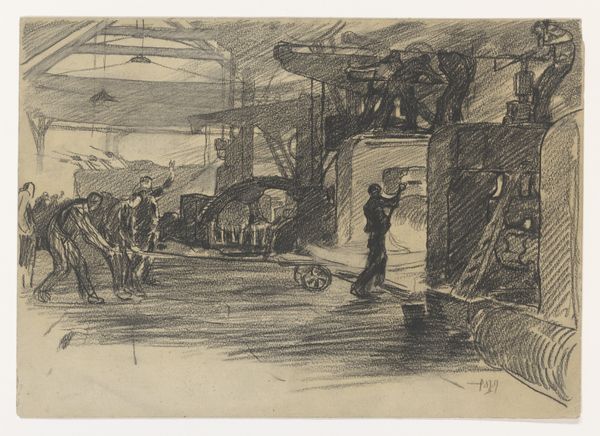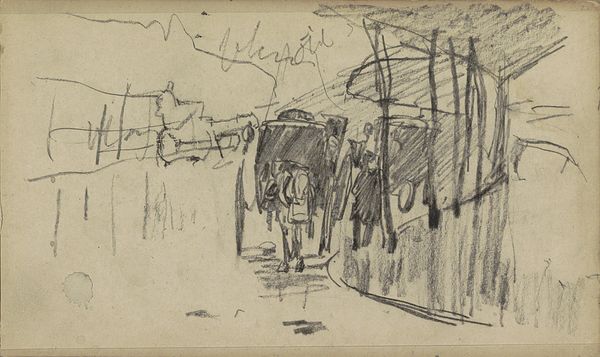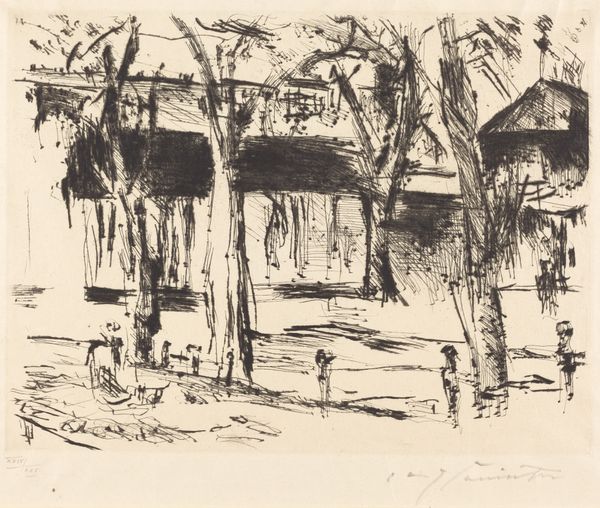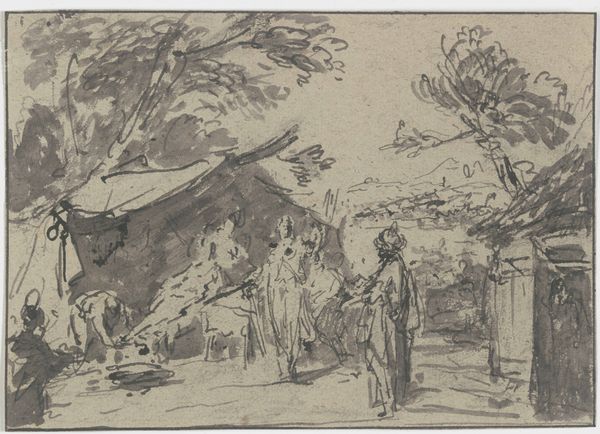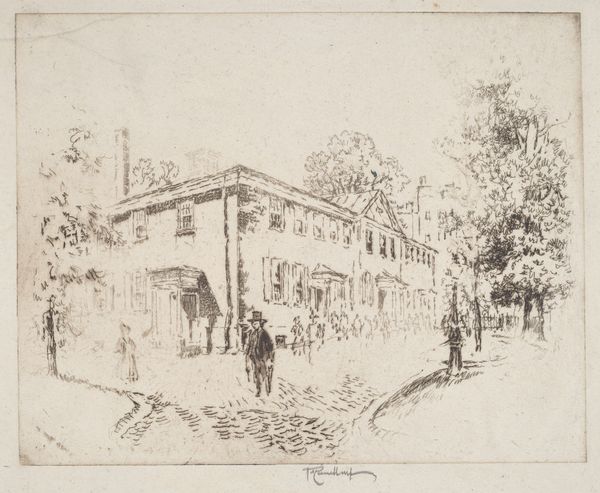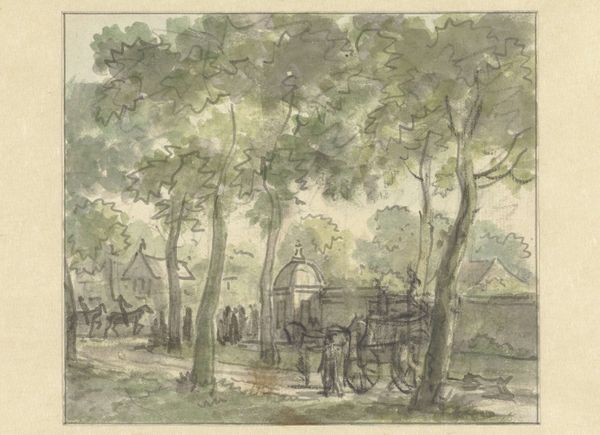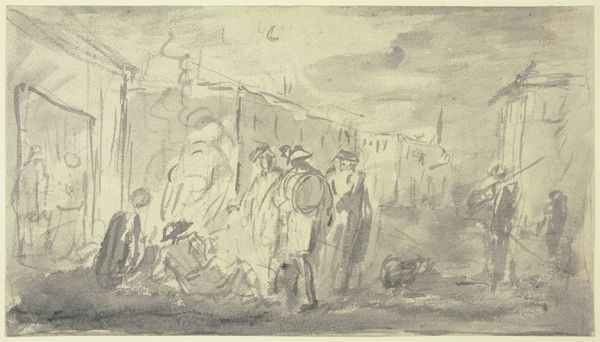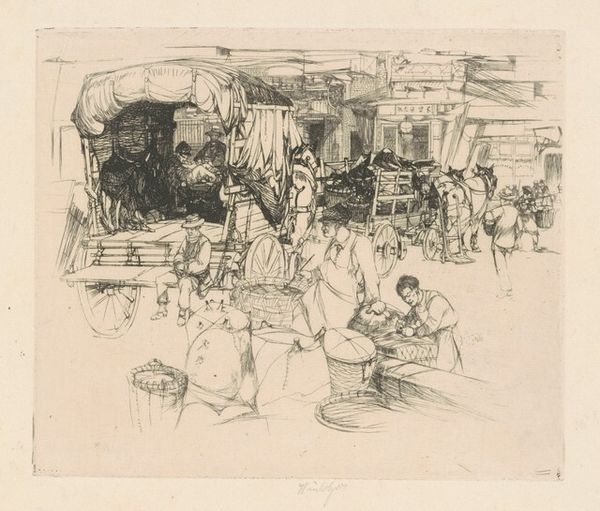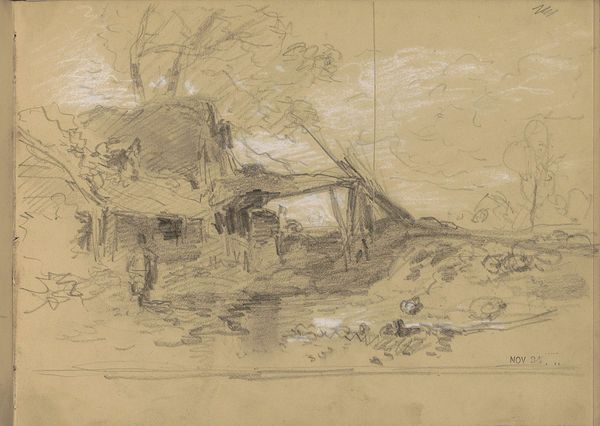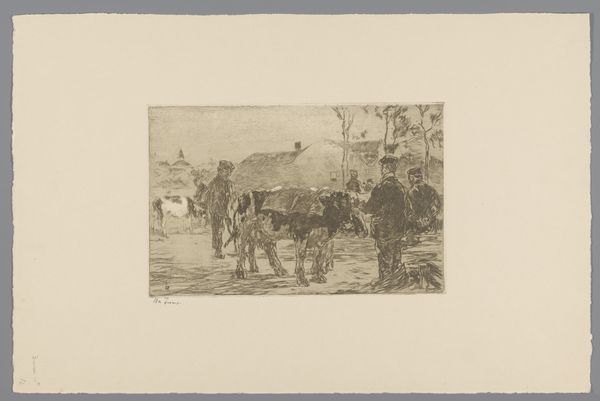
drawing, ink, pencil
#
drawing
#
pen sketch
#
landscape
#
ink
#
pencil
Copyright: Public Domain
Editor: Here we have Wilhelm von Kobell's "Ein Rasthaus, im Vordergrund Tiere am Wasser", created using ink and pencil. It strikes me as a glimpse into the daily life of a bygone era, but it feels incomplete; almost as though a lot is left unsaid. What can you tell me about the societal context surrounding such a work? Curator: That's an interesting observation! Kobell captures a bustling scene, but with a reserved hand, doesn’t he? It makes us think about the market for landscape drawings at the time. Who was interested in acquiring these sorts of images of rural scenes, and what purpose did they serve? Editor: Presumably wealthier patrons who wouldn't necessarily have this at their doorstep? Was there a political element? Curator: Absolutely. Landscapes weren't just pretty pictures. Think about the rising middle class at this time, looking for ways to display their good taste. Picturesque scenes of nature and everyday life became incredibly popular, reinforcing a specific image of their homeland and often subtly asserting ownership and control over that landscape, too. How do you think the depiction of animals factors into this sense of ownership? Editor: So it’s like they’re curating their own vision of the ideal countryside, maybe even downplaying the hardships associated with that kind of labor? I guess the beauty of it masks some harsher realities. Curator: Exactly! And consider where this drawing might have been displayed: not in a farmer's cottage, but in a townhouse or even a museum. It transforms the experience of the land, turning it into an aesthetic object rather than a lived environment. Something we are perhaps still doing. Editor: That's a great point, the context is essential. It makes me view the work with more critical eyes. Thank you for shedding light on all of this.
Comments
No comments
Be the first to comment and join the conversation on the ultimate creative platform.

